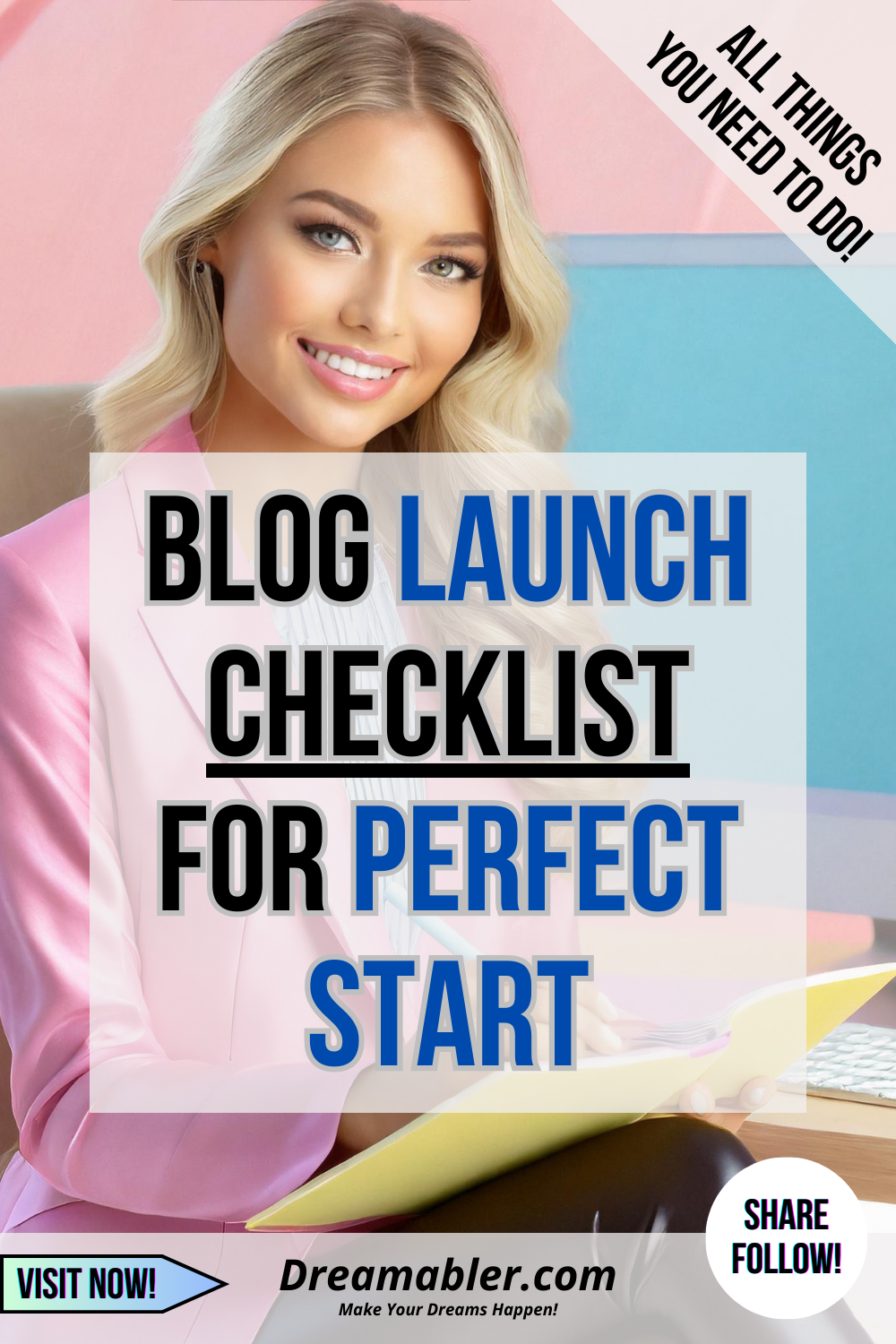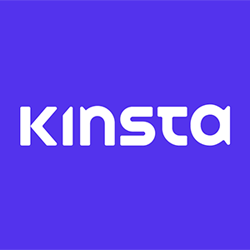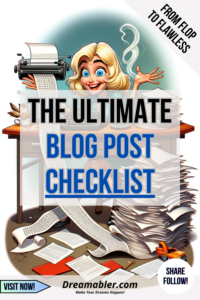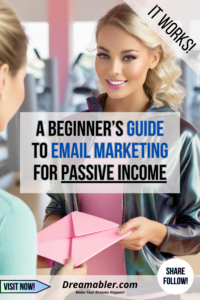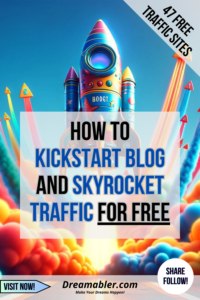Starting a blog is like embarking on a thrilling journey. It’s an opportunity to share your voice, ignite conversations, and build a community around your passions and expertise. But let’s be honest, the path to launching a blog can feel like navigating through a maze.
Where do you begin? What steps are crucial for a strong start? That’s where a comprehensive blog launch checklist comes in handy, transforming the overwhelming into the achievable.
A checklist ensures you don’t miss any critical steps in the excitement of going live. It’s your personal roadmap, guiding you through each phase of the blog launch process. From defining your blog’s purpose to the technical setup, from content creation to your grand launch, every step is a building block towards your blog’s success.
But this isn’t just any checklist. It’s a step-by-step guide designed to not only get your blog off the ground but to set it soaring. Whether you’re a seasoned writer venturing into the digital world or a newbie with a story to tell, this checklist is your ally. It’s about laying a solid foundation, sparking connections, and growing a vibrant community around your blog.
So, are you ready to turn your blog dream into reality? Let’s dive into this journey together, step by step, with clarity and confidence. Welcome to the ultimate blog launch checklist, your first step towards blogging success.
Planning Phase
Embarking on your blogging journey begins with a solid plan. This initial phase is all about laying the groundwork for your blog, ensuring every step you take is intentional and aligned with your vision. Let’s break down the essential steps to get you started on the right foot.
Define Your Blog’s Purpose
First things first, why are you starting a blog? This might seem straightforward, but it’s crucial to dig deep. Your blog’s purpose is its heartbeat, guiding your content, engaging your audience, and setting you apart.
Are you aiming to share knowledge, inspire change, or entertain? Maybe you’re looking to establish yourself as an expert in your field. Whatever your reason, write it down. This statement will be your north star, keeping you focused and motivated.
Identify Your Target Audience
Knowing who you’re writing for is key to creating content that resonates. Your target audience isn’t just anyone; it’s the group of people most likely to be interested in your content. Think about their age, interests, challenges, and what they’re searching for online. Understanding your audience helps tailor your content to their needs and preferences, making your blog a go-to resource for them.
Choose Your Blog’s Niche
A niche is your blog’s specific focus area, and choosing one is like finding your place in the vast blogging universe. It’s tempting to cover a broad range of topics, but niches allow for deeper connections and expertise. Consider your passions, skills, and the intersection with what your audience seeks. A well-defined niche not only attracts a dedicated readership but also sets a clear direction for your content.
Conduct Competitor Analysis
You’re not alone in the blogging world, and that’s a good thing. Checking out what others in your niche are doing can provide valuable insights. Look at their content, what resonates with their audience, and how they engage with their readers. This isn’t about imitation but inspiration. Identifying gaps in their content or areas you can improve upon can help carve out your unique space in the niche.
Set Clear Blogging Goals
What does success look like for your blog? Setting specific, measurable, achievable, relevant, and time-bound (SMART) goals gives you targets to aim for. Whether it’s reaching a certain number of subscribers, generating a specific amount of traffic, or publishing a set number of posts per month, clear goals help you measure progress and keep your blogging journey on track.
This planning phase is the foundation of your blogging adventure. Taking the time to thoroughly explore these steps will set you up for a more focused, purposeful, and successful blog launch.
Technical Setup
After laying the strategic groundwork, it’s time to roll up your sleeves for the technical setup. This phase is where your blog starts to take shape in the digital world. Let’s navigate through the technical essentials to bring your blog to life. Here I touch on each technical step quickly, I recommend reading more detailed instructions from my article on how to start a blog!
Select a Blogging Platform
Your blogging platform is your blog’s home. It’s where you’ll create, manage, and publish your content. There are several platforms to choose from, each with its pros and cons. WordPress and Blogger are popular choices, but there are others like Squarespace, Wix, and Medium, depending on your needs.
WordPress, for instance, offers flexibility and a wide range of customization options, making it a favorite for many bloggers, including me. Consider factors like ease of use, customization, and scalability when making your choice. The right platform will make your blogging journey smoother and more enjoyable.
Choose a Domain Name
Your domain name is your blog’s address on the internet. It’s how readers will find you and remember you. Choosing a domain name is a mix of creativity and strategy. It should be memorable, easy to spell, and reflective of your blog’s niche and content. Avoid complicated words or phrases that might be hard to remember or spell. Think of your domain name as your first impression in the digital world; make it count.
Purchase Web Hosting
Web hosting is where your blog’s data is stored and accessed on the internet. A reliable hosting provider ensures your blog is always available to your readers and loads quickly.
There are various hosting services available, from shared hosting, ideal for new bloggers, to more robust options like VPS or dedicated hosting as your blog grows. Consider factors like uptime, customer support, and scalability when choosing your hosting provider. Remember, a good host is the backbone of a successful blog. I recommend Kinsta!
- Super fast WP hosting
- Automatic backups
By purchasing products and services through affiliate links, you can support our work at no additional cost to you. In many cases, you’ll even receive extra benefits, such as discounts. Your support is greatly appreciated.
some bonus text here some bonus text here
By purchasing products and services through affiliate links, you can support our work at no additional cost to you. In many cases, you’ll even receive extra benefits, such as discounts. Your support is greatly appreciated.
Install Your Blogging Platform
Once you’ve chosen your platform and secured your hosting, it’s time to install your blogging software. Most hosting providers offer easy, one-click installations for popular platforms like WordPress. This step is about making your chosen platform ready to use on your website.
Follow the installation instructions provided by your hosting service or the platform itself. If you encounter any hiccups, don’t hesitate to reach out to customer support.
Configure Blog Settings
With your platform installed, it’s time to dive into the settings. This is where you personalize your blog’s functionality to suit your needs. Adjust your permalink structure for SEO-friendly URLs, set your time zone, configure comments settings, and more.
These initial configurations are crucial for both user experience and search engine visibility. Take the time to explore the settings area of your platform to understand the available options and optimize your blog’s setup.
Select a Blog Theme
Your blog’s theme is its visual personality. It’s the first thing visitors notice, so it should resonate with your niche and reflect your style. Most blogging platforms offer a range of free and premium themes. When choosing a theme, consider its responsiveness (how it looks on mobile devices), loading speed, and compatibility with plugins.
A well-chosen theme not only captivates your audience but also enhances the user experience on your blog. I recommend GeneratePress.
Customize Your Theme
Once you’ve selected a theme, it’s time to make it your own. Customizing your theme involves tweaking elements like colors, fonts, and the overall layout to align with your branding. This step is crucial for creating a cohesive look and feel that tells your blog’s story at a glance. Most themes offer customization options within the dashboard, allowing you to adjust these elements without needing to code.
Remember, consistency in your visual branding reinforces your blog’s identity and makes it more memorable to your audience.
Install Essential Plugins
Plugins extend the functionality of your blog, adding features that enhance both the back-end management and the user experience. Essential plugins to consider include SEO tools to help your blog rank higher in search results, security plugins to protect your site from threats, and backup plugins to safeguard your content.
While it’s tempting to install many plugins for various features, be selective. Too many plugins can slow down your site, so choose those that truly add value to your blog.
Set Up Google Analytics
Understanding your audience and how they interact with your blog is key to growth. Google Analytics is a powerful tool that tracks your blog’s traffic, user engagement, and other vital metrics. Setting up Google Analytics allows you to make data-driven decisions, helping you refine your content strategy and improve user experience based on actual user behavior. It’s a window into what’s working on your blog and what needs tweaking.
Create a Favicon
A favicon might seem like a small detail, but it’s a significant part of your blog’s identity. This tiny icon appears in browser tabs and bookmarks, giving your site a professional touch and making it easily recognizable among a sea of tabs. Creating a favicon often involves designing a simplified version of your logo or an element that represents your blog. It’s the finishing touch that ties your blog’s visual identity together.
With these steps, the technical setup of your blog is nearly complete. You’ve not only given your blog a home and a name but also dressed it up and equipped it with the tools it needs to thrive. Each of these steps is a building block in creating a blog that’s not only functional but also engaging and true to your vision.
Content Creation
With the technical setup of your blog well underway, it’s time to focus on what will truly breathe life into it: the content. Content is the heart of your blog, the reason people visit, and why they return. Crafting a solid content strategy is not just about filling your blog with words and images; it’s about creating value, sparking interest, and engaging your audience. Let’s delve into the steps to ensure your content stands out.
Develop a Content Strategy
Before you start writing, it’s crucial to have a clear plan for your content.
- What topics will you cover?
- How often will you post?
- What format will your posts take?
A well-thought-out content strategy aligns with your blog’s purpose and audience’s interests, ensuring you deliver consistent and relevant content. Consider incorporating a mix of evergreen content that remains relevant over time and timely posts that tap into current trends or events in your niche.
Create an Editorial Calendar
An editorial or content calendar is your content planning tool, helping you organize what to publish and when. It allows you to visualize your content schedule, balance different types of posts, and ensure regular updates. Whether you prefer a digital calendar, a spreadsheet, or a simple planner, the key is to use it to maintain a consistent posting rhythm.
Planning ahead also helps in managing your time effectively, especially when balancing blogging with other commitments.
Write Your First Blog Posts
Before your blog goes live, prepare several posts to publish right away. This not only gives your early visitors a taste of what’s to come but also helps in establishing your blog’s theme and tone. Your initial posts should introduce readers to your blog, highlight what they can expect, and showcase your unique perspective.
Aim for quality over quantity; well-crafted, engaging posts will make a strong first impression and encourage visitors to explore further.
Optimize for SEO
Search Engine Optimization (SEO) is key to making your content discoverable. Use relevant keywords throughout your posts, craft compelling meta descriptions, and utilize alt tags for images. However, remember that while SEO is important, your primary focus should be on creating valuable content for your readers. Use keywords naturally and ensure your posts provide the information or entertainment your audience seeks.
Create Engaging Images
Visuals play a crucial role in making your content appealing and shareable. Whether it’s photos, infographics, or illustrations, engaging images can complement your text and enhance your message. You can create your own visuals, use royalty-free images from online libraries, generate image with AI tools or even collaborate with artists. Ensure the visuals align with your brand’s style and add value to your content.
Set Up Categories and Tags
Organizing your content with categories and tags improves navigability and enhances the user experience. Categories allow you to group your posts into broad topics, while tags can be used for more specific themes within those categories. This structure not only helps readers find content that interests them but also aids in content management as your blog grows.
Crafting compelling content is an ongoing process that evolves with your blog. By following these steps, you’ll establish a strong content foundation that engages your audience and sets the stage for your blog’s growth and success.
Legal and Administrative
As your blog begins to take shape, it’s crucial not to overlook the legal and administrative aspects. These elements are essential for protecting both you and your readers, ensuring transparency, and building trust. Let’s navigate through the key steps to ensure your blog complies with legal requirements and sets clear expectations for its use.
Create a Privacy Policy Page
A privacy policy is a must-have for any blog, especially data protection is paramount. This policy outlines how you collect, use, and protect your visitors’ information. It’s not just about legal compliance with regulations like the General Data Protection Regulation (GDPR); it’s also about showing your readers that you value and safeguard their privacy.
There are templates and generators available online, but make sure your policy accurately reflects your blog’s specific practices.
Draft a Terms of Service Page
Your Terms of Service (ToS) page sets the rules for using your blog. It’s like a contract between you and your readers, outlining what they can expect from your blog and what you expect from them in return. This might include guidelines on commenting, copyright information, and disclaimers about the content you provide.
Clearly stating these terms helps prevent misunderstandings and legal issues, ensuring a smooth experience for both you and your audience.
Develop a Disclosure Policy
If you plan to monetize your blog through affiliate marketing, sponsored content, or any form of partnerships, a disclosure policy is essential. This policy should transparently state how you generate income from your blog, including any relationships with brands or companies.
Transparency not only adheres to legal standards like those set by the Federal Trade Commission (FTC) but also fosters trust with your readers by being upfront about your content’s nature.
Set Up Contact Information
Providing a way for your readers to contact you is crucial for building relationships and trust. Whether it’s through a simple email address or a more formal contact form, make it easy for your audience to reach out with questions, feedback, or opportunities. This not only opens the door for engagement but also establishes your blog as a professional and accessible platform.
Addressing the legal and administrative aspects of your blog might seem daunting, but it’s a fundamental step in establishing a credible and trustworthy platform. By taking care of these details, you’re not just complying with laws and regulations; you’re also showing your readers that you’re serious about providing a safe, respectful, and transparent online space.
Pre-Launch Marketing
As the launch of your blog approaches, building excitement and anticipation becomes key. Pre-launch marketing is about creating a buzz around your blog before it even goes live. This strategic phase helps you hit the ground running, ensuring you have an eager audience waiting to devour your content from day one. Let’s explore effective pre-launch marketing tactics that can set the stage for a successful blog launch.
Build an Email List
An email list is one of the most valuable assets for your blog. It provides a direct line of communication with your audience, allowing you to share updates, exclusive content, and more. Start by offering a signup form for newsletters on your pre-launch page or social media profiles.
Consider incentivizing sign-ups with a freebie, like an ebook, a mini-course, or a preview of your upcoming content. Building your email list early ensures you have a captive audience ready and waiting when your blog launches.
Create a Launch Teaser Campaign
A teaser campaign can spark curiosity and build anticipation for your blog’s launch. Use your social media platforms to share sneak peeks of your content, the design of your blog, or the topics you’ll be covering. These teasers should be intriguing and shareable, encouraging your followers to spread the word. A countdown to your launch date can also add to the excitement, making your audience feel part of the journey.
Reach Out to Influencers
Influencers in your niche can be powerful allies in amplifying your blog’s launch. Identify influencers who share your target audience and whose values align with your blog. Reach out to them with a personalized message, sharing your blog’s mission and how it resonates with their content.
Offer them an exclusive look at your blog or invite them to contribute a quote or insight. Their endorsement can lend credibility to your blog and expose it to a broader audience.
Prepare Guest Blog Posts
Guest blogging is an effective strategy to drive traffic to your new blog and introduce yourself to new audiences. Before your launch, write and pitch guest posts to established blogs within your niche. These posts should provide value to the host blog’s audience while subtly promoting your upcoming blog. Include a call-to-action inviting readers to visit your blog for more information or sign up for your newsletter to stay updated on the launch.
Pre-launch marketing sets the momentum for your blog’s debut. By engaging your audience early, building relationships with influencers, and leveraging guest blogging opportunities, you can ensure your blog launches to an eager and receptive audience. These efforts not only boost your initial traffic but also lay the groundwork for sustained growth and engagement post-launch.
Launch Day
The day you’ve been preparing for has finally arrived: it’s time to launch your blog to the world. This pivotal moment is your opportunity to make a great first impression, attract initial readers, and set the tone for your blog’s future. Here’s how to ensure your launch day goes smoothly and effectively.
Publish Your Initial Posts
Begin by making your first batch of carefully crafted content live. These initial posts should showcase the range of topics you plan to cover and reflect the quality and style of content your readers can expect going forward.
Aim for a mix that appeals to the broad interests of your target audience, providing both value and variety right out of the gate. This not only engages early visitors but also gives them a reason to explore your blog further and return for future updates.
Announce Your Launch
Now it’s time to spread the word about your new blog. Use every channel at your disposal to announce the launch. This includes sending out an email blast to your pre-built list, sharing the news on all your social media platforms, and leveraging any other networks you’re part of.
Personalize your announcement to make it exciting and inviting, encouraging your network to visit your blog and share the news with their own circles. The goal is to create a buzz that draws people in and gets them talking about your blog.
Engage With Early Readers
As visitors start to explore your blog, engagement becomes key. Monitor your blog closely on launch day and beyond, paying special attention to comments and feedback. Responding promptly and thoughtfully to your readers’ reactions not only fosters a sense of community but also shows that you value their input and participation.
This early engagement is crucial for building loyal readership and can provide invaluable insights into your audience’s preferences and expectations.
Launch day is just the beginning of your blogging journey, but its importance can’t be overstated. It sets the momentum for your blog’s growth and establishes your commitment to your audience. By publishing compelling content, effectively announcing your launch, and engaging with your readers from the start, you lay the foundation for a successful and vibrant blogging future.
Post-Launch
After the excitement of launch day, the journey of growing and nurturing your blog begins. This phase is about understanding your blog’s performance, refining your strategies, and building on the momentum you’ve created. Let’s explore the key steps to ensure your blog continues to thrive post-launch.
Monitor Analytics
Keeping a close eye on your blog’s analytics is crucial for understanding how your content is performing and how visitors are engaging with your site.
Tools like Google Analytics can provide insights into page views, user behavior, traffic sources, and more. Use this data to identify what’s working well and what might need tweaking. For example, if certain posts are getting more attention, consider creating more content on those topics.
Adjust SEO Strategies
SEO is an ongoing process, and what works today might not work tomorrow. Regularly review your SEO performance and be prepared to adjust your strategies. This could mean updating keywords, improving site speed, or enhancing the user experience, and for example web 2.0 link building. Staying adaptable and responsive to changes in search engine algorithms will help maintain and improve your blog’s visibility.
Continue Building Your Email List
Your email list is a direct line to your audience, making it one of your most valuable assets. Continue to grow your list by offering compelling incentives for signups, such as exclusive content, free downloads, or access to webinars. Make sure your signup forms are prominently placed on your blog and that the signup process is straightforward.
Plan Future Content
An updated editorial calendar is essential for maintaining a consistent posting schedule and keeping your content strategy on track. Regularly brainstorm new ideas and topics that align with your audience’s interests and your blog’s niche. Planning ahead also allows you to capitalize on upcoming trends, events, or holidays relevant to your content.
Network With Other Bloggers
Building relationships with other bloggers in your niche can open up opportunities for collaboration, guest posting, and cross-promotion. These connections can be invaluable for driving traffic, sharing insights, and expanding your reach. Engage with other bloggers through comments, social media, and blogging communities or events.
Iterate Based on Feedback
Feedback from your readers is a goldmine of insights. Pay attention to comments, emails, and social media interactions to understand your audience’s preferences and pain points. Be open to making changes based on this feedback, whether it’s tweaking your content approach, improving site navigation, or addressing specific reader requests.
The post-launch phase is about fine-tuning your strategies and building on the foundation you’ve established. By monitoring your blog’s performance, staying flexible with your SEO tactics, engaging with your audience, and fostering connections within the blogging community, you’ll set your blog up for continued growth and success.
Growth Strategies
As your blog starts to gain traction and build a following, it’s time to think about growth and how to sustain it. Growth involves not only increasing your audience but also maximizing the potential of your blog as a platform. This can include monetizing your efforts and expanding the types of content you offer. Let’s delve into strategies that can help take your blog to the next level.
Implement Monetization Strategies
Monetizing your blog can provide the resources needed to invest back into your content and grow your platform. There are several paths to explore:
- Ads: Displaying ads on your blog can generate revenue based on traffic and clicks. Platforms like Google AdSense can be a good starting point, but ensure that ads don’t detract from the user experience.
- Affiliate Marketing: By promoting products or services relevant to your niche, you can earn commissions on sales made through your referral links. Choose affiliate programs that align with your content and add value for your audience.
- Selling Products or Services: Depending on your niche, you might create and sell your own products, such as ebooks, courses, merchandise, or offer consulting services. This not only monetizes your blog but also strengthens your brand.
Expand Your Content Reach
Diversifying the types of content you produce can attract a wider audience and keep your existing readers engaged. Consider branching into:
- Podcasts: Starting a podcast can be a powerful way to reach people who prefer audio content. You can dive deeper into topics you’ve written about or cover new subjects entirely.
- Videos: Video content is highly engaging and can be shared across multiple platforms, including YouTube, social media, and your own blog. Videos can range from tutorials and reviews to vlogs and interviews.
- Other Media Formats: Depending on your audience and niche, other formats like webinars, online workshops, or interactive tools can add value and enhance your content offering.
Expanding your content reach also involves leveraging different channels to distribute your content. Social media, email newsletters, and guest posting on other blogs can increase your visibility and attract new readers. Focusing on growth strategies like monetization and content diversification not only helps sustain your blog financially but also enriches your content ecosystem. By continuously exploring new ways to engage your audience and generate revenue, you can ensure the long-term success and vitality of your blog.
Get Read For Launch!
Embarking on the journey of launching and growing a blog is both exhilarating and challenging. From laying the initial groundwork in the planning phase to the technical setup, from crafting engaging content to navigating the legal landscape, and finally, to launching and expanding your blog’s reach—each step is a milestone towards building a platform that resonates with your audience and fulfills your blogging aspirations.
As we wrap up this comprehensive guide, remember that the journey doesn’t end here. Blogging is an evolving adventure, with each post, each interaction, and each strategy adjustment offering opportunities for growth and learning. Stay curious, stay engaged, and most importantly, stay true to the passion that set you on this path.
I invite you to join my newsletter for regular updates, insights, and tips to further enhance your blogging journey. It’s a space where we can continue the conversation, sharing the latest trends, personal experiences, and actionable advice to help your blog thrive.
Don’t forget to follow me on my social media channels for real-time updates and more engaging content. Your support and engagement mean the world to me, and I’m excited to grow this community together.
I’d love to hear from you. Your questions, comments, and feedback are invaluable as we navigate the blogging landscape together. Post your thoughts below, and let’s start a conversation. Your input not only enriches our community but also helps shape the future content to better serve your needs and interests.
Thank you for joining me on this journey. Here’s to the stories we’ll tell, the connections we’ll make, and the growth we’ll achieve together. Happy blogging!
Frequently Asked Questions (FAQ) Related to Launching a Blog
⭐️How detailed should my blog launch checklist be?
Your blog launch checklist should be detailed enough to cover all essential steps without overwhelming you. Include key tasks like defining your niche, setting up your blog platform, creating initial content, and planning your marketing strategy. Tailor the checklist to your specific needs and goals for a smooth launch.
⭐️Can I launch my blog without having all the content ready?
It’s recommended to have a few pieces of content ready at launch to give new visitors a taste of what your blog will offer. However, you don’t need to have a vast library. Having 3-5 posts ready for your launch is a good starting point, with a plan to consistently add more content.
⭐️What’s the most important step in the blog launch checklist?
While all steps are important, defining your blog’s purpose and target audience is crucial. These foundational elements guide all other decisions, from the design and platform choice to the content strategy and marketing efforts.
⭐️Should I focus on SEO from the very beginning?
Yes, incorporating basic SEO principles from the start is beneficial. This includes using relevant keywords, optimizing your post titles and descriptions, and ensuring your website is mobile-friendly and fast-loading. Early attention to SEO sets a strong foundation for future growth.
⭐️How soon should I start promoting my blog before the launch?
Start building anticipation for your blog 2-4 weeks before the launch. Use social media, email newsletters, and personal networks to tease upcoming content and the launch date. This pre-launch buzz can help drive initial traffic to your blog from day one.
⭐️Can I launch my blog silently without a pre-launch or launch campaign?
Yes, you can launch your blog silently without a formal pre-launch or launch campaign. This approach allows you to grow your content and audience organically over time, reducing the pressure of a big launch event. It can be particularly useful if you prefer to focus on content quality and SEO optimization before actively promoting your blog. A silent launch gives you the flexibility to make adjustments and improvements based on early feedback and analytics, setting a solid foundation for future promotional efforts when you’re ready.

